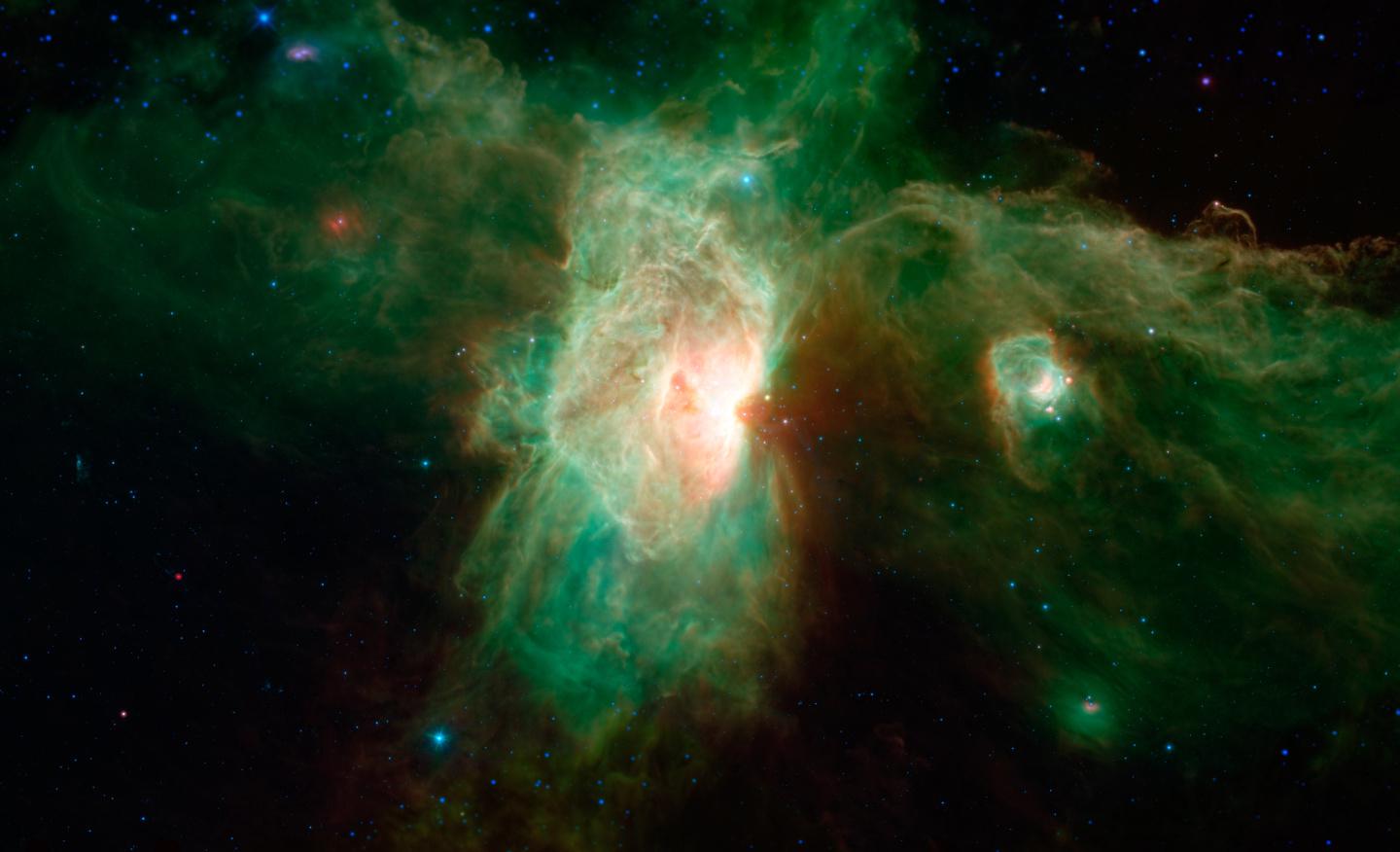Well folks, looks like I have your next desktop wallpaper for you: a Spitzer Space Telescope image of the incredible Flame Nebula, a star-forming gas cloud hanging off Orion’s belt:

Photo by NASA/JPL-Caltech
Holy. Wow.
Spitzer is an infrared telescope, sensitive to light well beyond what our eyes can see. When it comes to astronomical objects, this part of the spectrum is dominated by the glow of dust—long, carbon-based molecules created when stars are born and when they die. Chemically, the dust is a polycyclic aromatic hydrocarbon, and is pretty similar to soot.
That makes it dark in the kind of light we see, but when it’s warmed by nearby stars it glows in the far infrared, where Spitzer can see it. The Flame Nebula is a cloud of gas and dust roughly 1,000–1,500 light-years away, and in visible light it glows due to the flood of ultraviolet light from Alnitak, the easternmost star in Orion’s belt (seen in the Spitzer image as the bright blue star in the upper center); this UV energizes hydrogen, oxygen, nitrogen, and more, causing them to glow.
But in this view we see the dust, warmed by NGC 2024, a cluster of newborn stars in the Flame’s heart. The stars blast out fierce winds of subatomic particles—called stellar winds—as well as lots of UV light, which carves out a huge cavity in the middle of the cloud. You can actually get a pretty good sense of that growing hole in the Spitzer image.
But there’s more: On the right, you can see the ghostly outline of what looks like a horse’s head poking up above that shelf of dust stretching out horizontally. This actually is the amazing Horsehead Nebula, so named for its appearance in visible light:

Photo by NASA/JPL-Caltech
How about that? The Horsehead is also the site of star birth; the bright star at the top of the head (appearing red) is a newborn star that’s deeply embedded in dust. Just off the top of the picture is the bright star Sigma Orionis, actually a five-star system that is incredibly bright and powerful. The light from that star is so intense it’s eating away at the top of the nebula, and you can see this as a bright rim along the top of the Horsehead in the Spitzer image. An infrared image released by Hubble in 2013 shows this more clearly, too.
What an amazing shot. And be careful not to confuse this picture with one of the more famous Orion Nebula! They do look similar, and are actually fairly close to each other both in the sky and in our galaxy.
I love that such beauty is actually so scientifically interesting, as well as so fundamentally important, as well: Places like this are where a lot of stars in the Universe are born. Our own Sun may have formed in such a cloud, billions of years ago.
If you’re looking for wonder and amazement laced heavily with eye candy, astronomy is a pretty good place to find it.